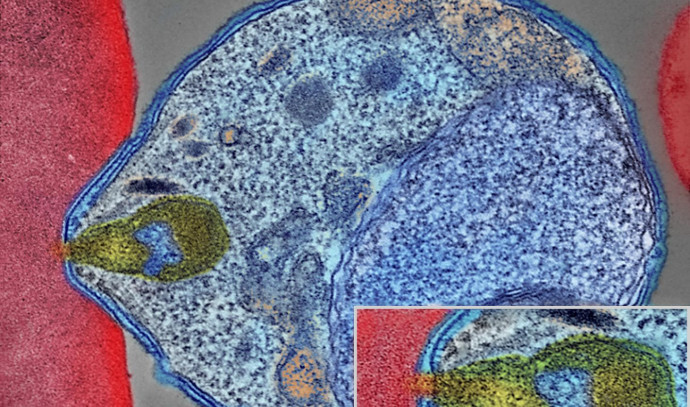The potentially deadly parasitic organism, responsible for the disease visceral leishmaniasis, has evolved a new strategy for spreading, according to a new study published on September 7.
The peer-reviewed study, published in the academic journal Cell, found that the parasite was persisting in hostile environments by targeting individual non-immune cells.
The researchers had located the Leishmania donovani parasites in stem cells in the bone marrow of chronically infected mice. More concerningly, many of the stem cells were blood related, which has led scientists to believe that this is the reason that many people who die of the disease often have some type of blood disease.
“Treating a patient with leishmania drugs never eliminates every parasite from the body – they persist for the rest of a patient’s life,” said researcher Abhay Satoskar, professor of pathology at the Ohio State University College of Medicine. Perhaps these uncommon cells are the cells responsible for harboring these parasites in low numbers. Some drugs may not reach these cells properly or may not be effective with those parasites, and maybe the parasites in these kinds of cells are different compared to parasites in immune cells because they can adapt. It would be important to eliminate these hidden parasites if we want to stop the transmission of the disease.
“It changes the way we think about this parasite: If uncommon cells are infected, what is the cells’ role? What are the parasites doing there? How did they evade the drug treatment? Are they different from parasites in other cells, or the same? There are lots of questions.”
What is the deadly disease that this parasite is responsible for?
Cutaneous leishmaniasis is a disease that disfigures the skin. The disease impacts 1.2 million people annually, usually people in hotter environments. The World Health Organization (WHO) said that if left untreated, the disease was fatal in 95% of cases.
In rare cases, around 100,000 a year, the parasitic disease can attack the organs of the host.
The disease is found in Iraq, Somalia, Sudan, Yemen and around parts of the Americas and South-East Asia.
“Poor housing and domestic sanitary conditions (lack of waste management or open sewerage) may increase sandfly breeding and resting sites, as well as their access to humans. Sandflies are attracted to crowded housing because it is easier to bite people and feed on their blood. Human behaviour, such as sleeping outside or on the ground, may increase risk,” according to the WHO.
Little is known about how the disease works, but scientists have expressed concern for some time that the disease may spread outside of the immune cell hosts and linger in the body. This theory has been difficult to prove because the number of infected cells in carriers is small, and it is hard to locate a sample to confirm the theory.
“Development of a Leishmania atlas analogous to the Malaria Cell Atlas would facilitate unprecedented investigations into such intractable questions as parasite persistence, drug resistance, determinants of protective immunity, and pathogenesis,” the researchers wrote in the study, when explaining the significant impact that their data could provide.
How did the researchers study the parasite, despite the obstacles?
The researchers used single-cell RNA sequencing to search the spleen and bone marrow cells of infected mice. Using this technique allowed the researchers to find a much-sort-after sample.
Doing this, the researchers were able to identify which cell types were infected and which weren’t.
In the spleen of the mice, the researchers identified the greatest quantity of infected cells, most of which were the frontline immune cells known as macrophages and monocytes. These cells are responsible for absorbing invading organisms, like bacteria or parasites, as part of an immune response. They are meant to protect the other cells from infection.
“Textbooks say Leishmania are parasites of immune cells, mainly phagocytes, that hijack those cells and live there. That is what we’ve learned for many years,” said Satoksar. “Though that was the dogma, it appears during chronic infection that they’re also infecting other cell types.”
“Finding Leishmania genes linked to other cell signatures gives us clues of which cells to look for next in follow-up protocols.”
“These are organs where these parasites persist for many, many years after an infection as cleared and a person who becomes immune suppressed can develop disease again,” Satoskar said. “With our animal data and what we find in human samples, we hope to understand the pathways that are assisting parasites to survive and use that knowledge to develop new therapies targeting those pathways.”


